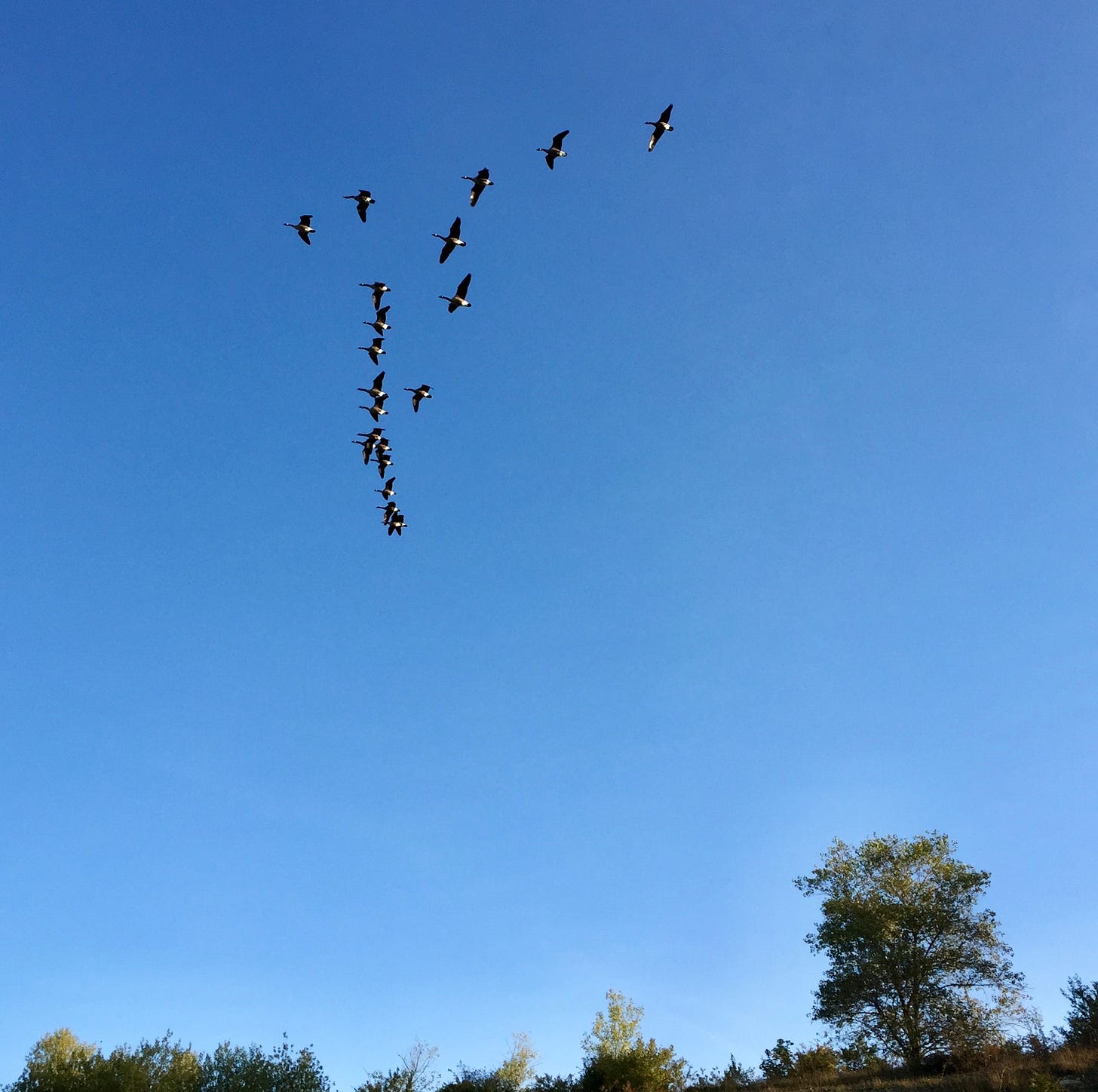Prelude
A sure sound that summer is slipping away are skeins of geese filling the late summer sky. This is my prelude to Autumn.
This is my prelude to autumn and the second of my new weekly newsletter that charts the micro seasons across 52 weeks of the year.
You will hear them before you see them: swooshes, whistles and rattles as air passes through the feathers of their beating wings, accompanied by enthusiastic honking.
September 1st is the first day of meteorological autumn, but it takes more than a date in the calendar to signal the shift from late summer to autumn.
The early sunlight lights up their white bellies.
Seasoned travellers
It’s a thrill to hear the geese again as I know this twice-daily feast for the senses will be short-lived. Very much a part of the Chilterns landscape, the outbound autumnal (and inbound spring) geese are quite a spectacle as they are drawn to the multitude of disused quarries that are a feature of our chalk geology.
These vast numbers of seasonal visitors and locals enjoy the water, abundant food and safe breeding that these former industrial sites now offer. Havens for wildlife, they can be enjoyed at an official wildlife reserve, or casually in the surrounding fields.
Canada geese mate for life and travel vast distances with family groups, often returning to the same places each spring. Weather permitting, geese can travel an astonishing 1,500 miles in a day if the weather permits. These birds tend to fly around 40 miles per hour during migration, though that can increase up to 70 miles per hour if they catch a strong tailwind. Whoosh!
A mixed reputation
Canada geese have a mixed reputation depending on where you live, if you have a well manicured lawn, if they are nesting on your roof, or becoming a flight hazard beside a runway. They do prefer open water as this offers protection and food, which is something our quarries provide, so around here, they are very welcome. What encounters have you had?
A harbinger of change
The migration prep begins with small disordered skeins flapping overhead en route between local quarries where they roost and where they go to feed. Small groups landing in the fields near the quarries, others seem uncertain where they are going, stragglers honking from behind - perhaps younger birds, leaders responding from the front. This harbinger of change coincides with my dog walks and I can see them over the fields, or closer to home right over my house.
Over the coming weeks, their numbers will grow into the familiar impressive flying V’s - the wedges with hardly a feathers-width between each bird. Taking it in turn to lead, wave after wave of bigger and longer formations of up to 100 birds command the sky until suddenly, one morning, there will be silence. And sadness. Until they return in early spring to begin the cycle all over again.
Make your own discoveries
College Lake is a 65 hectare nature reserve in a former chalk quarry in Pitstone in the Aylesbury Vale district of Buckinghamshire in the Chilterns. Popular with twitchers, but great for the casual observer too. Worth a visit if you are in the area.
My “A Year in the Chilterns’ blog that has charted three years slowly uncovering and discovering the changing landscape in the naturally outstanding Chiltern Hills can be enjoyed here.




Would you believe I've never seen one? They are uncommon in my part of tge world. Nice piece
Lovely! I have never been to College Lake but will now try and visit this autumn.